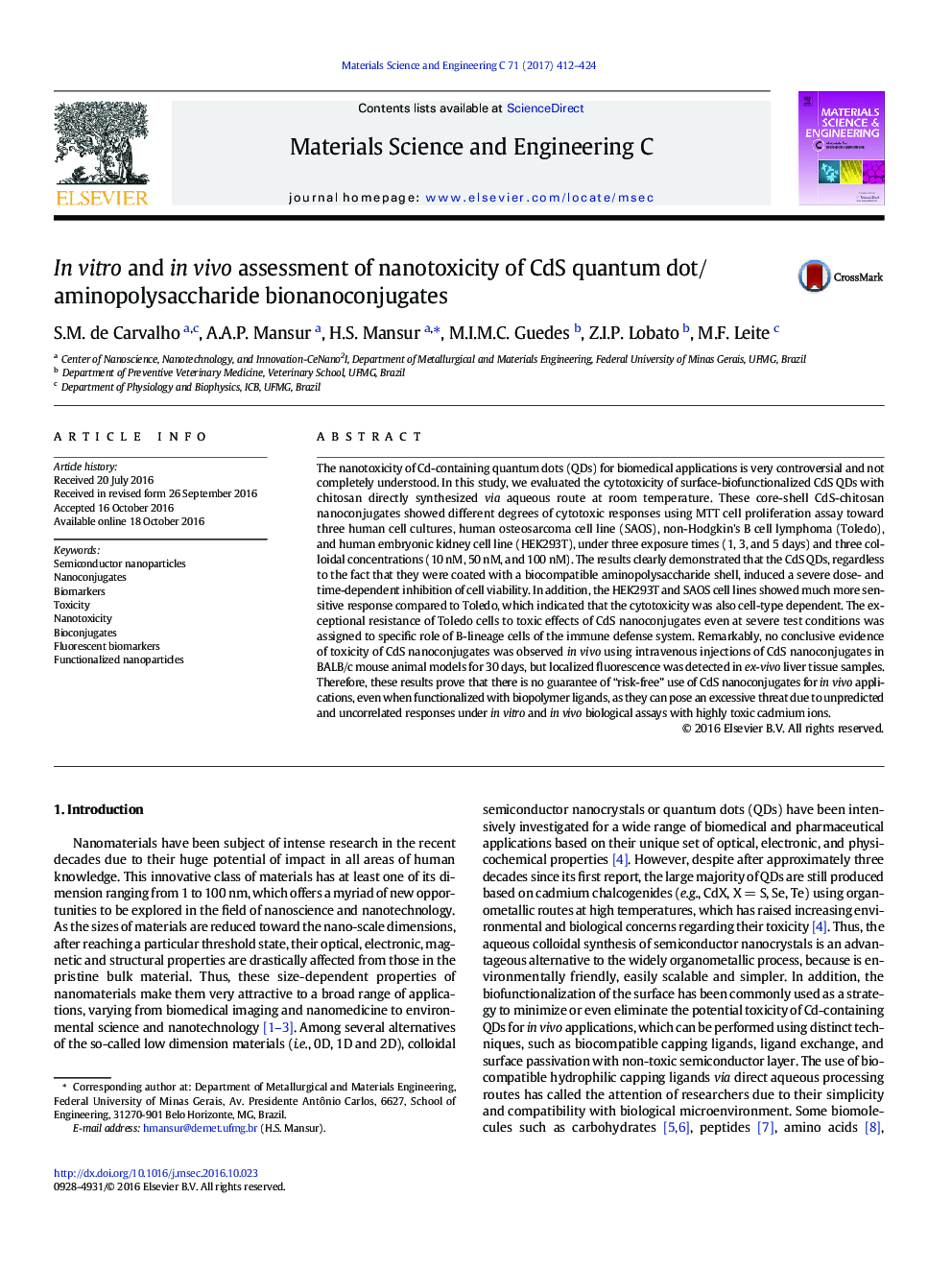| کد مقاله | کد نشریه | سال انتشار | مقاله انگلیسی | نسخه تمام متن |
|---|---|---|---|---|
| 5434645 | 1509150 | 2017 | 13 صفحه PDF | دانلود رایگان |

- CdS semiconductor quantum dots (QDs) functionalized with chitosan were prepared.
- Novel fluorescent colloidal core-shell nanostructures based on CdS/chitosan were produced.
- Nanoconjugates of CdS QDs were effective as fluorophores for cell bioimaging in vitro.
- CdS/chitosan nanoconjugates showed cytotoxicity dependent of the cell type in vitro.
- CdS/chitosan nanoconjugates showed no conclusive evidence of toxicity in mice in vivo.
The nanotoxicity of Cd-containing quantum dots (QDs) for biomedical applications is very controversial and not completely understood. In this study, we evaluated the cytotoxicity of surface-biofunctionalized CdS QDs with chitosan directly synthesized via aqueous route at room temperature. These core-shell CdS-chitosan nanoconjugates showed different degrees of cytotoxic responses using MTT cell proliferation assay toward three human cell cultures, human osteosarcoma cell line (SAOS), non-Hodgkin's B cell lymphoma (Toledo), and human embryonic kidney cell line (HEK293T), under three exposure times (1, 3, and 5Â days) and three colloidal concentrations (10Â nM, 50Â nM, and 100Â nM). The results clearly demonstrated that the CdS QDs, regardless to the fact that they were coated with a biocompatible aminopolysaccharide shell, induced a severe dose- and time-dependent inhibition of cell viability. In addition, the HEK293T and SAOS cell lines showed much more sensitive response compared to Toledo, which indicated that the cytotoxicity was also cell-type dependent. The exceptional resistance of Toledo cells to toxic effects of CdS nanoconjugates even at severe test conditions was assigned to specific role of B-lineage cells of the immune defense system. Remarkably, no conclusive evidence of toxicity of CdS nanoconjugates was observed in vivo using intravenous injections of CdS nanoconjugates in BALB/c mouse animal models for 30Â days, but localized fluorescence was detected in ex-vivo liver tissue samples. Therefore, these results prove that there is no guarantee of “risk-free” use of CdS nanoconjugates for in vivo applications, even when functionalized with biopolymer ligands, as they can pose an excessive threat due to unpredicted and uncorrelated responses under in vitro and in vivo biological assays with highly toxic cadmium ions.
Biocompatible surface functionalization with aminopolysaccharide is not enough for assuring safe biomedical applications of CdS nanoconjugates - a reliable bridge between in vitro and in vivo studies is necessary.211
Journal: Materials Science and Engineering: C - Volume 71, 1 February 2017, Pages 412-424